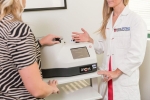Platelet-rich plasma (PRP) and hyaluronic acid (HA) for Knee Osteoarthritis

Platelet-rich plasma (PRP) and hyaluronic acid (HA) are 2 nonoperative treatment options for knee osteoarthritis (OA) that are supposed to provide symptomatic relief and help delay surgical intervention.
What was the purpose of this study?
To systematically review the literature to compare the efficacy and safety of PRP and HA injections for the treatment of knee OA.
Study Design: Meta-analysis of level 1 studies.
How was this study performed?
A systematic review was performed by searching PubMed, the Cochrane Library, and Embase to identify level 1 studies that compared the clinical efficacy of PRP and HA injections for knee OA.
What did the authors find?
- A total of 18 studies (all level 1) met inclusion criteria, including 811 patients undergoing intra-articular injection with PRP (mean age, 57.6 years) and 797 patients with HA (mean age, 59.3 years).
- The mean follow-up was 11.1 months for both groups.
- Mean improvement was significantly higher in the PRP group (44.7%) than the HA group (12.6%) for WOMAC total scores (P< .01).
- Of 11 studies based on the VAS, 6 reported PRP patients to have significantly less pain at latest follow-up when compared with HA patients (P< .05).
- Of 6 studies based on the Subjective IKDC outcome score, 3 reported PRP patients to have significantly better scores at latest follow-up when compared with HA patients (P< .05).
- Finally, leukocyte-poor PRP was associated with significantly better Subjective IKDC scores versus leukocyte-rich PRP (P< .05).
What does all this mean?
Patients undergoing treatment for knee OA with PRP can be expected to experience improved clinical outcomes when compared with HA.
Additionally, leukocyte-poor PRP may be a superior line of treatment for knee OA over leukocyte-rich PRP, although further studies are needed that directly compare leukocyte content in PRP injections for treatment of knee OA.
A Bit About PRP....
Although blood is mainly a liquid (called plasma), it also contains small solid components (red cells, white cells, and platelets). The platelets are best known for their importance in clotting blood. However, platelets also contain hundreds of proteins called growth factors that are very important in the healing of injuries.
PRP is plasma with many more platelets than what is typically found in blood. The concentration of platelets — and, thereby, the concentration of growth factors — can be 5 to 10 times greater (or richer) than usual.
To develop a PRP preparation, blood must first be drawn from a patient. The platelets are separated from other blood cells and their concentration is increased by spinning the blood down during a process called centrifugation. These platelets are then injected into the injured site.







